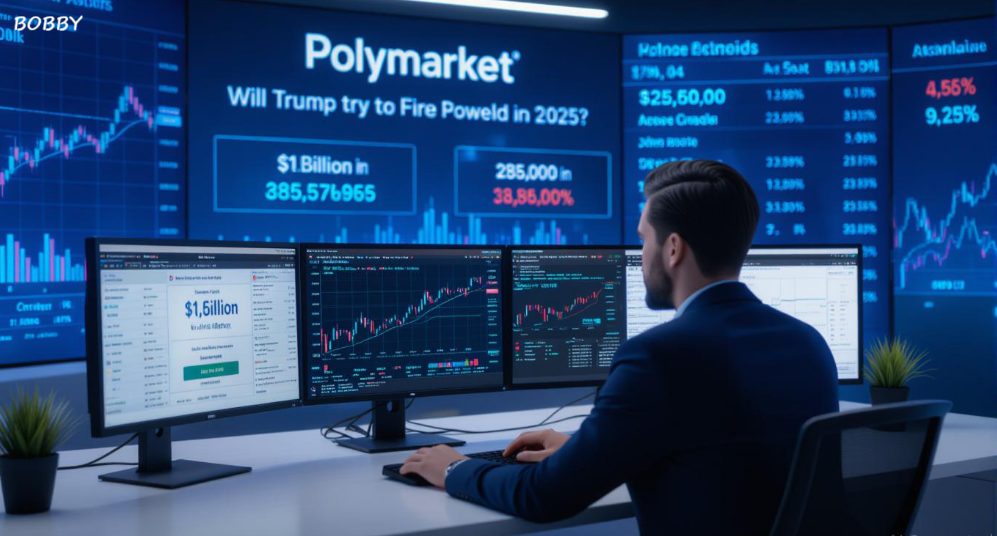Prediction markets, once a niche corner of the internet where users bet on elections, sports, or entertainment awards, are rapidly transforming into a major player in financial and data-driven ecosystems. Far from being mere online betting platforms, they are evolving into sophisticated networks of exchanges, protocols, and analytics platforms.
At the heart of this evolution is a compelling idea: the crowd, when properly incentivized, can often forecast future outcomes more accurately than experts, pollsters, or analysts. This principle is now being applied to everything from macroeconomic forecasts to corporate strategy.
Leading platforms like Kalshi and Polymarket are spearheading this movement, creating app development environments and attracting attention from deep-pocketed investors and major crypto players. Binance, for example, is exploring ways to make its BNB Chain an infrastructure hub for emerging startups in this space. Meanwhile, innovation is also sprouting on the periphery, with decentralized finance (DeFi) protocols experimenting with autonomous market creation and AI-driven forecasts.
From Simple Bets to Market Ecosystems
Kalshi and Polymarket dominate the current landscape, but in very different ways:
-
Kalshi has pushed prediction markets into the financial mainstream, allowing users to wager on a range of outcomes, including inflation rates, central bank decisions, and even snowfall.
-
Polymarket captured public attention with markets on presidential elections, pop culture, and sports, generating daily trading volumes comparable to some mid-sized cryptocurrency exchanges.
Both platforms prove that people are willing to stake real money on their beliefs about the future, and the aggregated results can often be eerily accurate.
The innovation extends into derivatives, too. Perpetual contracts, familiar to crypto traders, are being repurposed for event outcomes, allowing users to take leveraged positions on whether the Federal Reserve will cut rates or if a specific event will occur.
Around these core platforms, additional tools are emerging:
-
Analytics dashboards that visualize probability trends
-
Automated market makers (AMMs) to ensure liquidity
-
AI-powered “superforecasters” that interpret data from millions of bets
Collectively, these innovations signal the rise of a new information economy, where markets do not just reflect probabilities—they generate, refine, and monetize predictive intelligence.
Building Markets: The Platform Approach
Prediction markets are no longer just stand-alone betting venues. Platforms are evolving into ecosystems, combining infrastructure, applications, and analytics.
Crypto analyst 0xJeff, writing on X, highlighted four key areas where innovation is clustering:
-
Stock price and volatility forecasting
-
Weather prediction
-
Sports markets
-
General interest and cultural events
He noted that several projects are nearing the productization stage, with both infrastructure and application layers developed, showing the potential of predictive intelligence at scale.
Peripheral Innovations in Prediction Markets
While Kalshi and Polymarket are developing proprietary ecosystems, significant experimentation is occurring on the edges of the market:
-
AI-generated synthetic markets: Models can automatically launch contracts on events that statistical analysis deems significant but might be overlooked by human traders.
-
DeFi protocols like Zeitgeist and Omen: Anyone can create a market on virtually any outcome, from Taylor Swift album sales to the likelihood of an El Niño event.
-
Decentralized oracles: These verify outcomes without relying on central authorities, increasing trust and transparency.
Even traditional sports betting companies are exploring whether prediction markets can complement conventional odds, broadening engagement with their customers.
However, challenges remain:
-
Liquidity is abundant in high-profile markets like politics but thin in niche sectors
-
Information asymmetries allow insiders to outperform retail traders
-
Regulatory frameworks are uncertain, as decentralized structures clash with the demand for accountability
The Rise of Predictive Intelligence
Why is all this gaining attention? Because prediction markets are more than wagering—they are data-generating engines.
Consider these examples:
-
A market-implied probability of a government shutdown in Washington can be more accurate than insider gossip.
-
Odds on the Bank of Japan adjusting yield-curve controls can rival traditional survey-based forecasts.
-
Corporations could use crowd-sourced predictions to guide product launches, supply chain decisions, or geopolitical risk management.
Just as Bloomberg terminals aggregate real-time financial data, prediction-market dashboards could become indispensable tools for forward-looking intelligence. A few startups are already selling APIs that integrate live market odds into trading strategies, while AI firms are training models on prediction-market data, effectively creating a collective probability layer.
Unlike surveys or polls, these markets actively quantify uncertainty, creating rich new inputs for algorithmic decision-making.
Applications Across Finance, Policy, and Business
Predictive intelligence derived from these markets can influence multiple sectors:
-
Finance: Traders can integrate prediction-market data into algorithmic models, gaining an edge in forecasting market-moving events.
-
Public Policy: Governments and NGOs can monitor probabilities of elections, policy changes, or crises to improve strategic planning.
-
Corporate Strategy: Companies can assess risks around product launches, mergers, or market entry strategies using crowd-sourced predictions.
The history of financial markets shows that even small informational advantages can compound. Access to predictive intelligence could become as essential as traditional market data, shaping investment and operational decisions.
Challenges in Growth and Regulation
Prediction markets face tensions similar to cryptocurrency:
-
Decentralized innovation vs. regulatory oversight
-
Risk of market manipulation vs. free information flow
-
Balancing transparency with operational freedom
Regulators face a dilemma: heavy-handed enforcement could push markets offshore, while light regulation risks abuse and public backlash, particularly when political outcomes are wagered upon.
Liquidity is another critical factor. While popular events attract heavy betting, niche markets often suffer from thin liquidity, which can distort probabilities and reduce market reliability.
Additionally, decentralized setups, while philosophically appealing, complicate accountability, enforcement, and compliance, requiring innovative solutions.
The Irresistible Value of Predictive Intelligence
Despite challenges, the potential of predictive intelligence is significant:
-
Much like credit ratings revolutionized finance, prediction markets may become embedded as complementary tools for decision-making.
-
They do not replace expert analysis but quantify uncertainty in ways spreadsheets, polls, and think tanks cannot.
-
Platforms that successfully aggregate and curate collective knowledge could control a powerful asset: the world’s aggregated view of its own future.
Currently, the industry resembles a frontier town: experimental, chaotic, and lightly regulated. But over time, more structured, reliable signals are emerging, hinting at the enormous value of accurately interpreted crowd wisdom.
Future Outlook
Prediction markets are poised to grow across multiple dimensions:
-
Integration with AI: Algorithms can analyze massive datasets of bets to refine predictive models
-
Expansion of DeFi protocols: New platforms enable anyone to launch markets, democratizing access to predictive tools
-
Mainstream finance adoption: As accuracy and utility are proven, institutional investors may increasingly rely on prediction-market insights
-
Cross-sector impact: From corporate decision-making to government planning, prediction markets can provide actionable foresight
The next few years may see a fusion of prediction markets, AI, and DeFi, creating a robust ecosystem of predictive intelligence that is both profitable and socially valuable.
Conclusion
Prediction markets are evolving from a novel form of online gambling into serious engines of predictive intelligence. Platforms like Kalshi and Polymarket, combined with AI tools and DeFi protocols, are showing that the wisdom of the crowd, aggregated and analyzed at scale, can be more reliable than traditional forecasting methods.
While challenges around liquidity, regulation, and decentralization remain, the potential payoff is immense. Companies, governments, and financial institutions may increasingly rely on market-generated insights to make strategic decisions, creating a new frontier in information-driven economies.
Ultimately, those who capture, curate, and interpret collective intelligence—whether established leaders or nimble newcomers—stand to gain a unique competitive advantage. And in a world increasingly defined by uncertainty, that may be the most valuable asset of all.
FAQs
What is predictive intelligence in prediction markets?
Predictive intelligence leverages crowd behavior, aggregated data, and AI to forecast outcomes. It turns millions of small wagers into actionable insights, providing probabilities that often outperform polls or expert predictions.
Which companies are leading the prediction market space?
Kalshi and Polymarket dominate, but new entrants like Zeitgeist, Omen, and decentralized DeFi protocols are experimenting with innovative market creation, AI-driven forecasting, and decentralized verification.
How can businesses use prediction markets?
Companies can integrate market probabilities into strategy, risk management, and investment decisions, using predictive intelligence as a forward-looking guide for planning.




